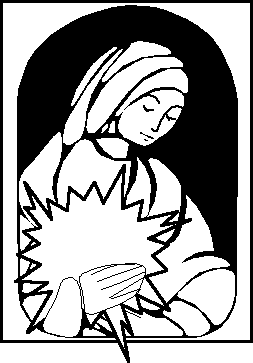

Pain or Fear - Overwhelming
by
Dennis Gersten, M.D.
One might call this a non-technique technique. Nonetheless, it is quite
powerful. The pain or fear will almost always change. And when one
observes pain in this way, a whole barrage of feelings may begin to arise.
People realize that pain is a signal to them, often a fearful signal. People may
realize that when they have pain, they're afraid it will never stop . . . that it
will ruin their lives . . . that they will end up helpless invalids. This
technique is ideal for people with cancer who have survived the first round
of treatment and are now experiencing the overwhelming fear of recurrence.
 I have used several different symptomatic treatments to help alleviate
fear in cancer patients. But the fear is often so enormous that it transcends
techniques. Cancer and AIDS are diagnoses that trigger enormous fear. With
cancer the initial diagnosis triggers overwhelming fear. But even after
someone has been treated and the cancer is gone, a deep fear of recurrence is
often present.
I have used several different symptomatic treatments to help alleviate
fear in cancer patients. But the fear is often so enormous that it transcends
techniques. Cancer and AIDS are diagnoses that trigger enormous fear. With
cancer the initial diagnosis triggers overwhelming fear. But even after
someone has been treated and the cancer is gone, a deep fear of recurrence is
often present.
So in the case of overwhelming fear, I often ask people to simply observe
the fear without trying to push it away. Let your mind explore the fear.
Where is the fear in your body? What are the fearful thoughts and images?
Just observe...allowing the fear to arise, change and dissolve. Let the
fear float. Let it break free from the clutches of your mind. Let yourself be
fully immersed in the fear. Embrace the fear. Breathe in and out of the fear,
allowing your breath to gently massage the fear.
And the results are powerful. Sometimes the fear seems to float out of
people's bodies . . . or it gradually disperses. But the experience of embracing
the fear, immersing oneself in the fear allows for transformation of the fear.
Even the fear of death is alleviated by using this approach. Whether
someone is suffering from intense pain, fear or any other overwhelming
feeling or symptom, embracing the pain is a powerful tool that should be in
every imagery therapist's doctor bag.
Go Back or
Return to the Beginning
 Return to Imagery Techniques
Return to Imagery Techniques



 I have used several different symptomatic treatments to help alleviate
fear in cancer patients. But the fear is often so enormous that it transcends
techniques. Cancer and AIDS are diagnoses that trigger enormous fear. With
cancer the initial diagnosis triggers overwhelming fear. But even after
someone has been treated and the cancer is gone, a deep fear of recurrence is
often present.
I have used several different symptomatic treatments to help alleviate
fear in cancer patients. But the fear is often so enormous that it transcends
techniques. Cancer and AIDS are diagnoses that trigger enormous fear. With
cancer the initial diagnosis triggers overwhelming fear. But even after
someone has been treated and the cancer is gone, a deep fear of recurrence is
often present.